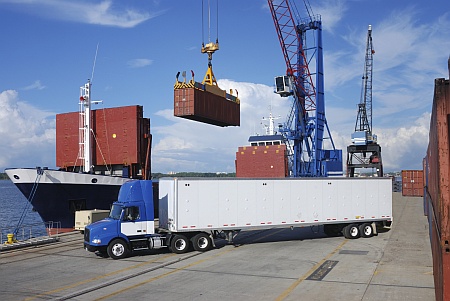Economic indicators tracking up for trucking industry
According to Forecast, a collaboration between the American Trucking Associations (ATA) and IHS Global Insight, overall freight tonnage will grow 23.5 percent and freight revenues will increase 72 percent from 2013 to 2025.
“We continue to see growth for the entire freight economy – but we also see that trucking will maintain its position as the nation’s dominant mode of freight transportation,” said Bob Costello, ATA’s chief economist.
According to Forecast, the industry will see the following:
- Trucking’s share of freight tonnage will grow from 69.1% in 2013 to 71.4% in 2025;
- Truckload volume will grow 3.5% a year through 2019, then 1.2% annually from 2020 to 2025 – however, truckload carriers will make greater use of intermodal rail for intermediate- and long-distance hauls.
- Rail intermodal tonnage will grow 5.5% annually through 2019 and 5.1% a year through 2025.
- Railroad market share will, however, shrink from 14.5% of all tonnage in 2013 to 13.8% in 2025.
GE Capital is predicting a rosy outlook as well, but the forecast is focusing on the rest of 2014.
“Given strengthening freight trends coupled with still very tight industry capacity, the supply/demand equation continues to favor motor carriers,” said senior research analyst Michael Zimm.
“Most freight indices continue to rebound strongly from a seasonal and weather- induced downtick early in 2014,” he added. “Since January, monthly sequential freight trends have remained positive while year-over-year tonnage growth continues to easily outpace overall GDP trends.”
Zimm adds that “barring a significant and unexpected slowdown in economic activity, freight trends heading into the fall should continue to benefit from an expected rebound in GDP growth coupled with normal seasonal strength of overall construction spending.”
Zimm said fuel prices have moderated slightly and Hours-of-Service related operational inefficiencies continue to put a crimp in capacity —which he notes “provides support for rising rates.”
The GE Capital report also tags the healthy market for new trucks as another positive bellwether. It cites preliminary data from ACT Research that showed net orders for Class Eight trucks during June soared 41 percent year over year— putting them at their highest level for that month since 2005. And over the entire first half of 2014, ACT indicated that Class Eight net orders were up 28 percent over last year’s first half.
David Congdon, CEO of Old Dominion Freight Line, says the trucking industry is operating at or near capacity, a testament to the resiliency of the American economy.
“2014 has certainly been the year the trucking industry stopped rebuilding from the recession of 2008 and started substantive growth. Over the next 18 months, carriers like Old Dominion Freight Line will likely expand their fleets just to meet increasing freight demands,” he said.
Congdon believes the industry should be allowed to increase trailer size to maximize efficiency.
“Even a modest increase in trailer size, with no increase in the weight limit, will improve highway safety, maintenance, and lower fuel use thanks to better technology and industry innovation. Increasing cubic capacity will actually reduce the number of trucks on the road, providing a reduction in fleet fuel consumption and roadway congestion,” he said. “Old Dominion and the LTL industry primarily uses twin 28 ft. trailers in over the road operations. We are advocating a modest increase to twin 33 ft. trailers with no increase in the 80,000 lb. weight limit.”
Manufacturers benefitted from a solid rebound in new export orders in August, with the pace of expansion picking up from July’s six-month low, while the latest increase in new business from abroad was the steepest for three years.
“August’s survey delivers further evidence that robust manufacturing growth momentum has been sustained through the third quarter, with overall business conditions improving at the fastest pace for over four years,” said Tim Moore, senior economist at Markit.
“Overall, with job hiring gathering momentum and input buying expanding at the sharpest pace for at least seven years, it seems U.S. manufacturers are increasingly confident that the recovery is firmly back on track and are gearing up for a sustained rebound in production schedules over the months ahead.”






